Old Photos: Education Side-by-Side
In 1958, six months after the Sputnik was launched, the Life Magazine ran an article comparing an American and a Russian student and drawing conclusions about problems with the American education system. Many of these problems are still with us today; while the Russian education is not what it used to be, the American educators are still busy making kids feel good about themselves, rather than teach, resulting in generations of students without advanced and, sometimes, basic skills.
You can read the article for yourselves and I will post just photos starting with the Russian student Alexei Kutzkov and continuing with his American Counterpart Stephen Lapekas in the next post.
Before you look at these photos, I want to point out that not all the Soviet schools in 1958 looked like this one, complete with chemical, physical and mechanical labs and not all the students were genii. Generally in Moscow everything looked better than in the rest of the country, but in every big city there were a few “show” schools, like the one I attended, happy to display the advantages of the Soviet system to the unsuspecting foreigners. Before the showtime an extraordinary amount of cleaning, scrubbing and painting occurred, combined with special deliveries of rare equipment and teaching aids; it wasn’t unheard of to serve improved lunches during the VIP visits; the school had to impress or else. Nevertheless, even without all these things the Soviet education system was one of the best in the world, not only producing world-famous scientists but maintaining high intellectual level in the rest of the population.
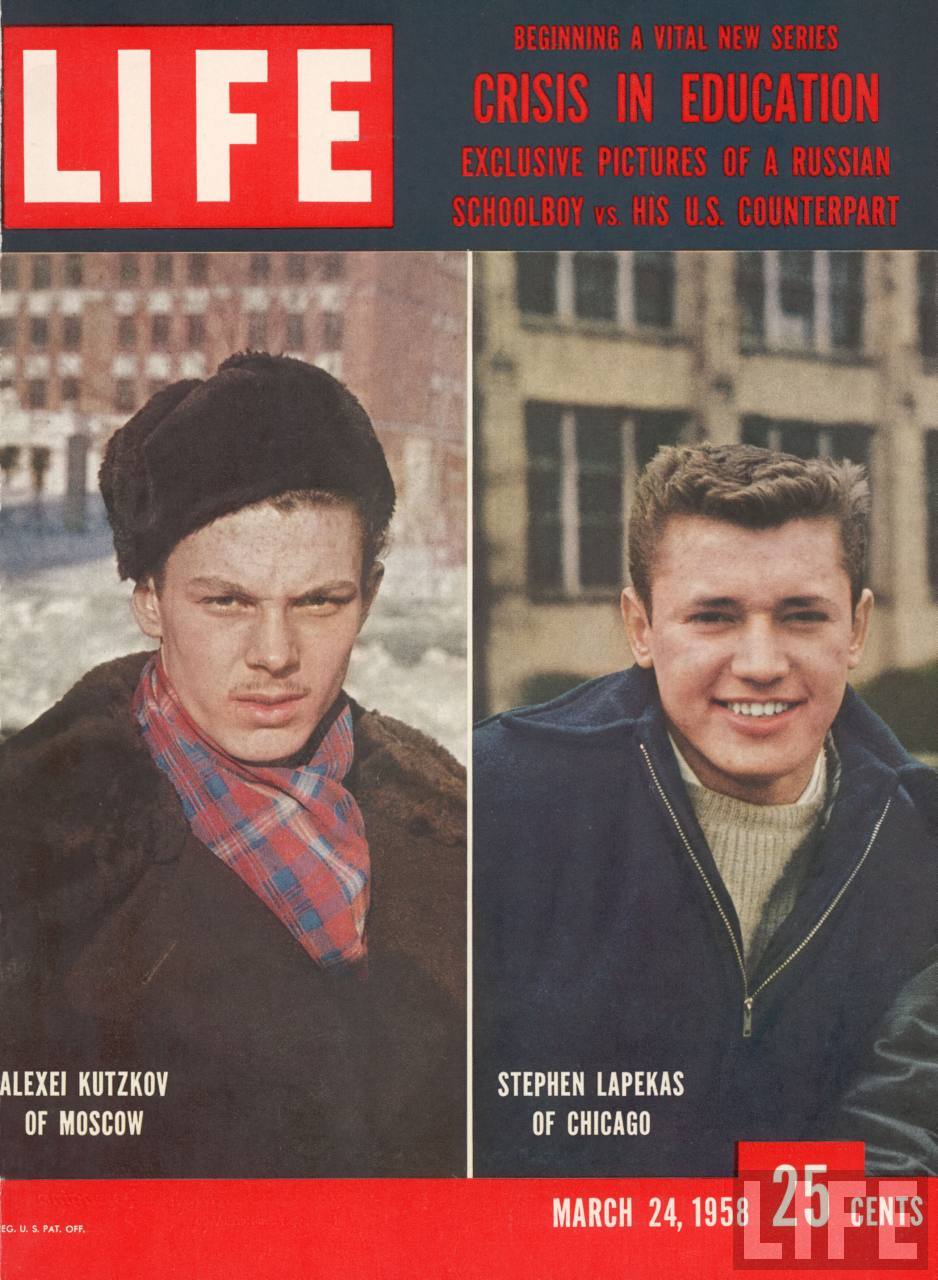
LIFE cover 03-24-1958 re. differences in Russian and American education comparing Moscow student Alexei Kutzkov (L) and his Chicago counterpart Stephen Lapekas (R) in photos by Howard Sochurek & Stan Wayman respectively.© Time 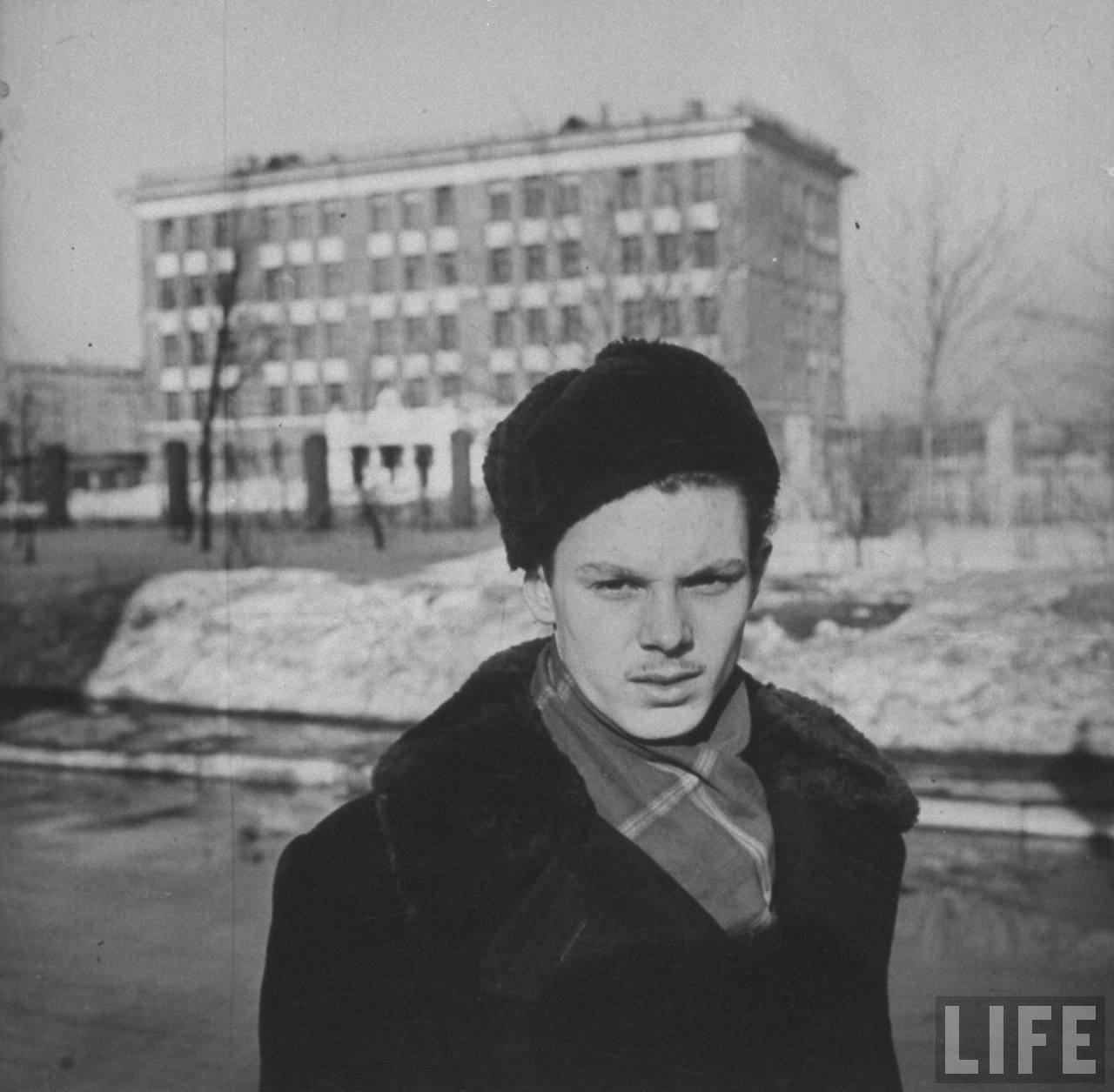
Russian high school student Alexei Kutzkov. ©Time.Howard Sochurek. 
Soviet public school student Alexei Kutzkov studying an engine in machine shop class. ©Time.Howard Sochurek. 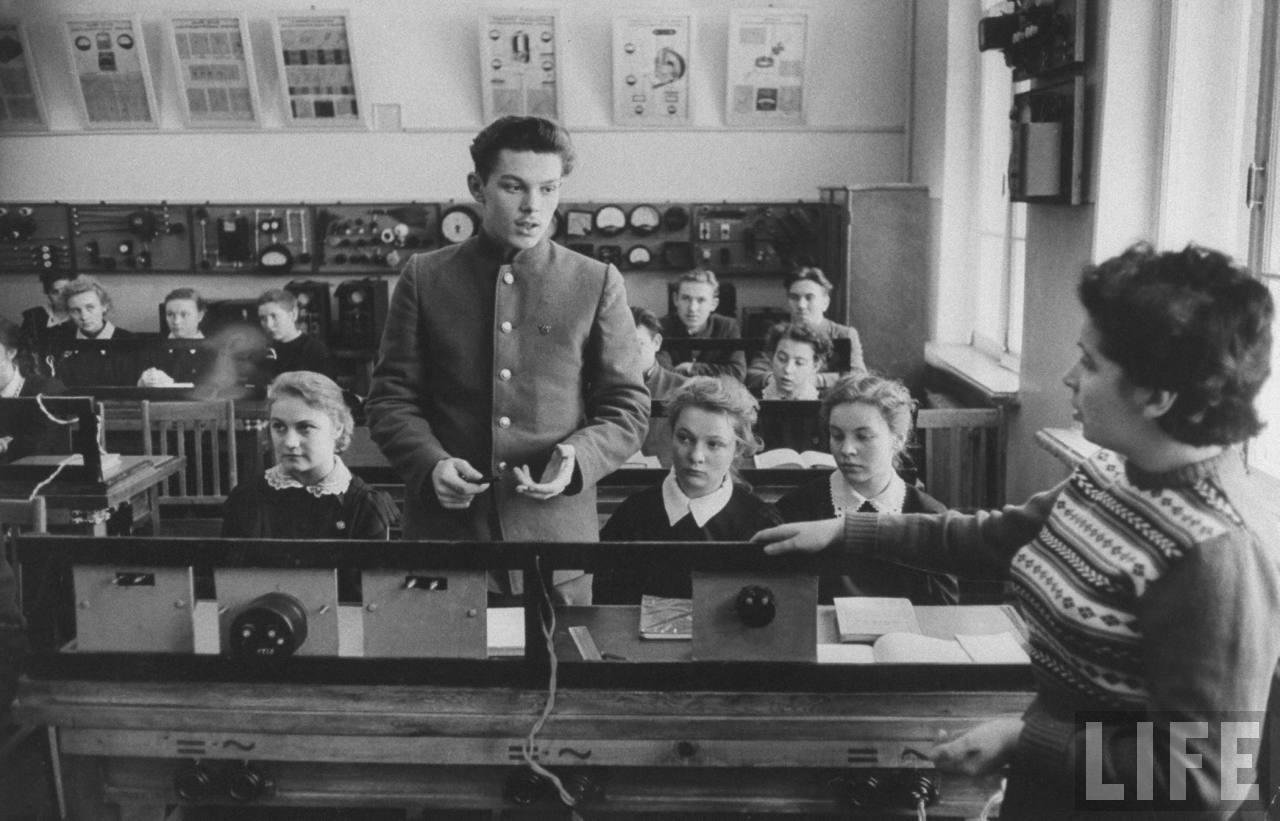
Alexei Kutzkov and other students attending class. ©Time.Howard Sochurek. 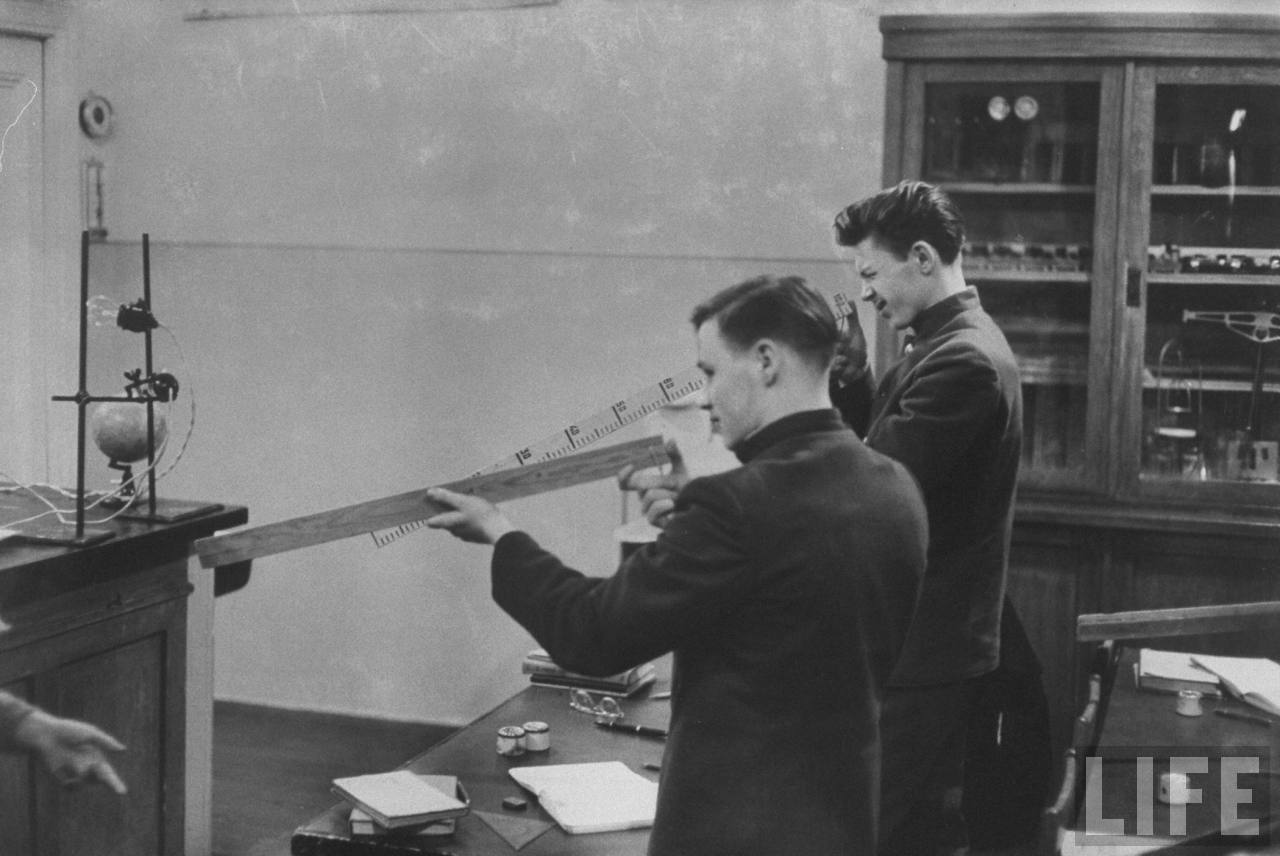
Alexei Kutzkov (C) attending physics class. ©Time.Howard Sochurek. 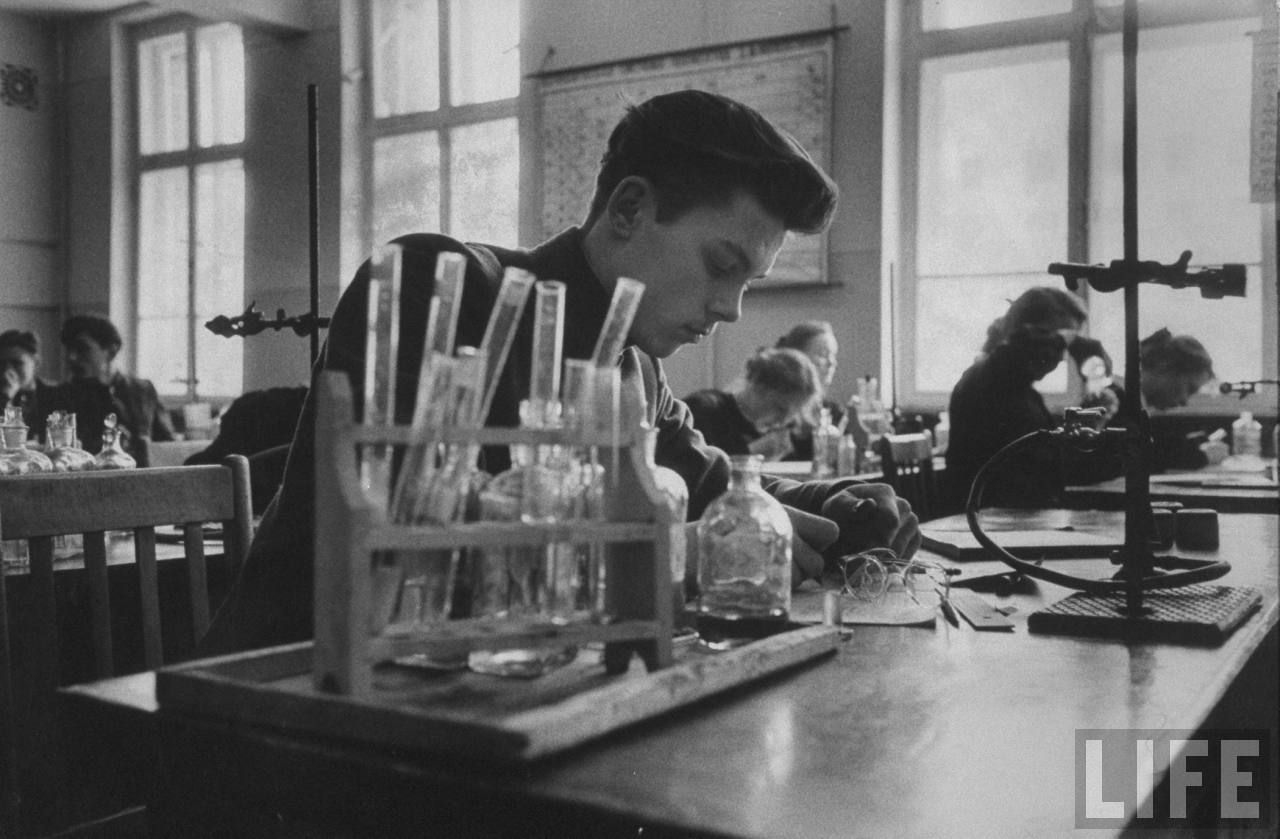
High school student Alexei Kutzkov working in chemistry class. ©Time.Howard Sochurek. 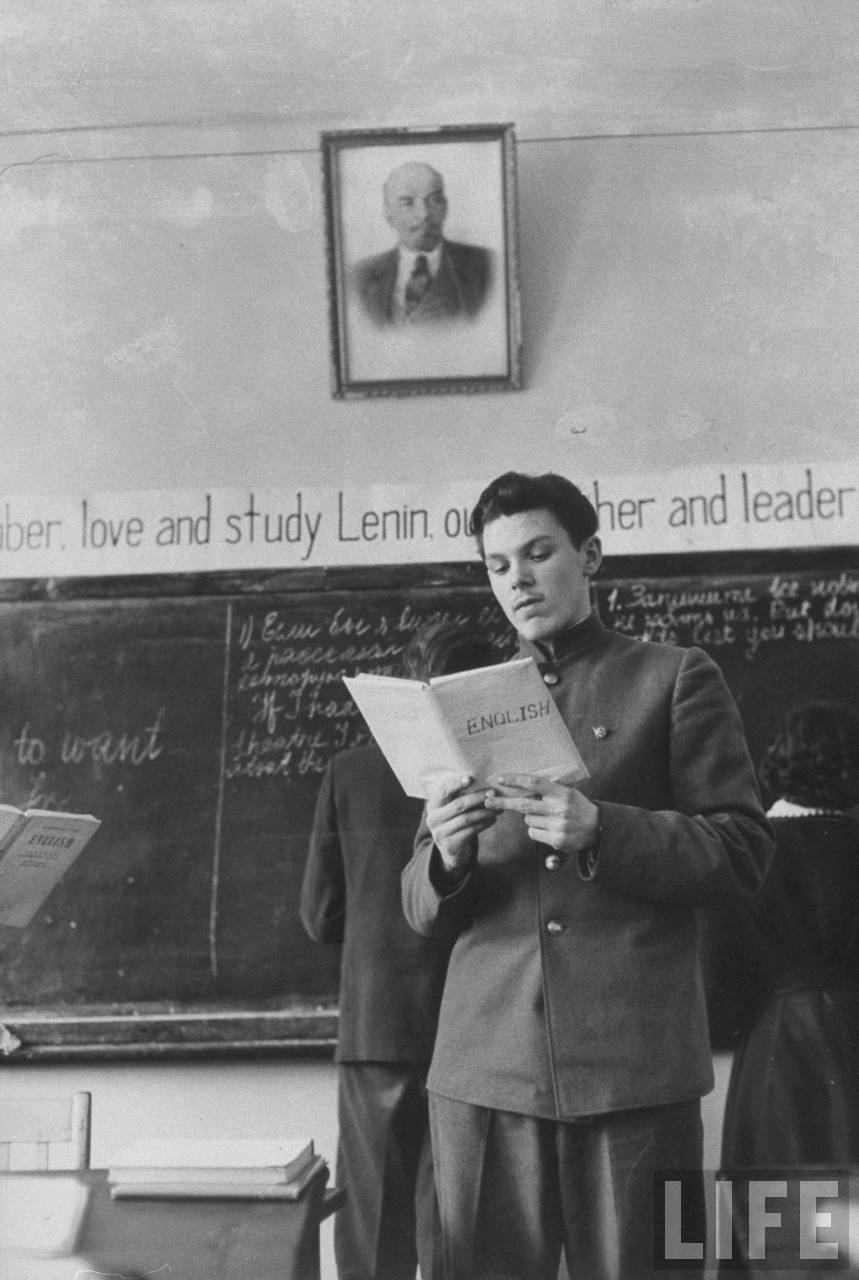
High school student Alexei Kutzkov studying English in public school. ©Time.Howard Sochurek. 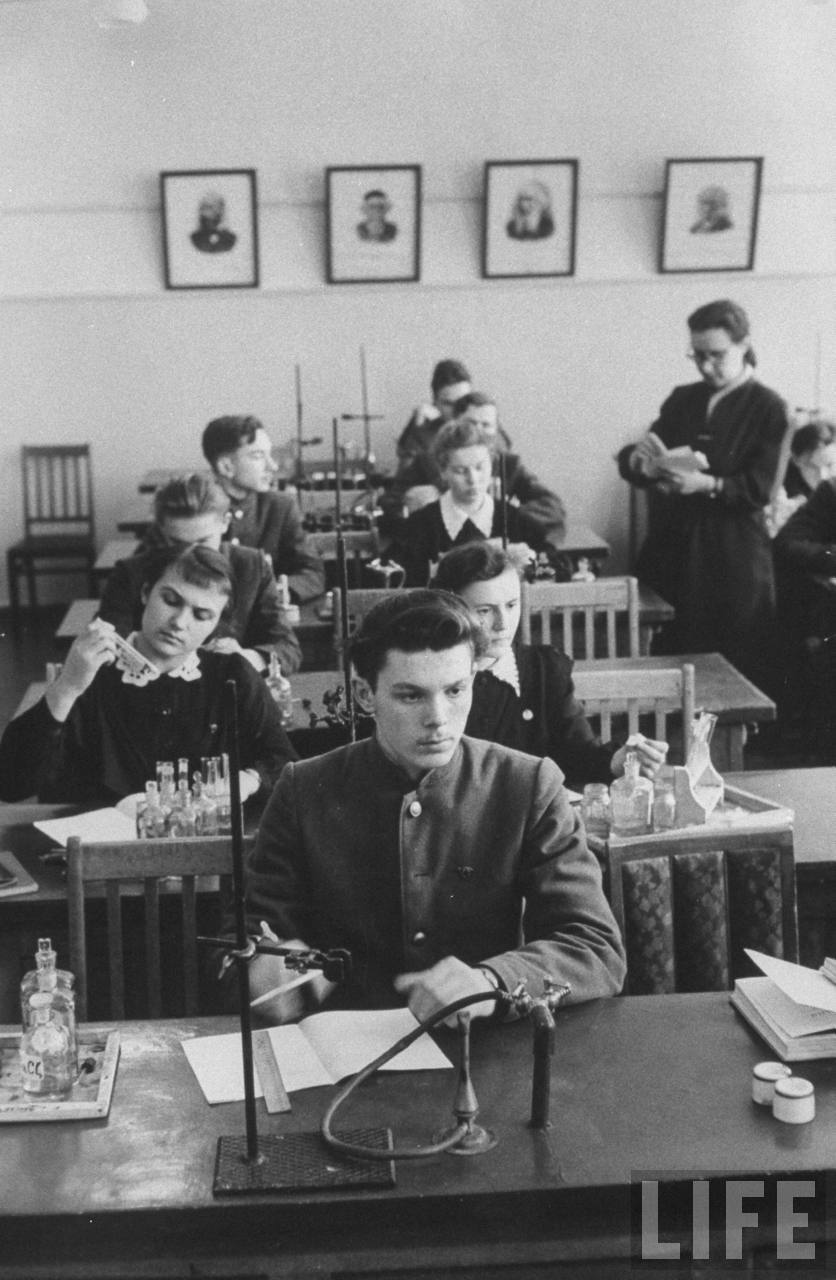
Alexei Kutzkov (C fore) and other students listening during chemistry class. ©Time.Howard Sochurek. 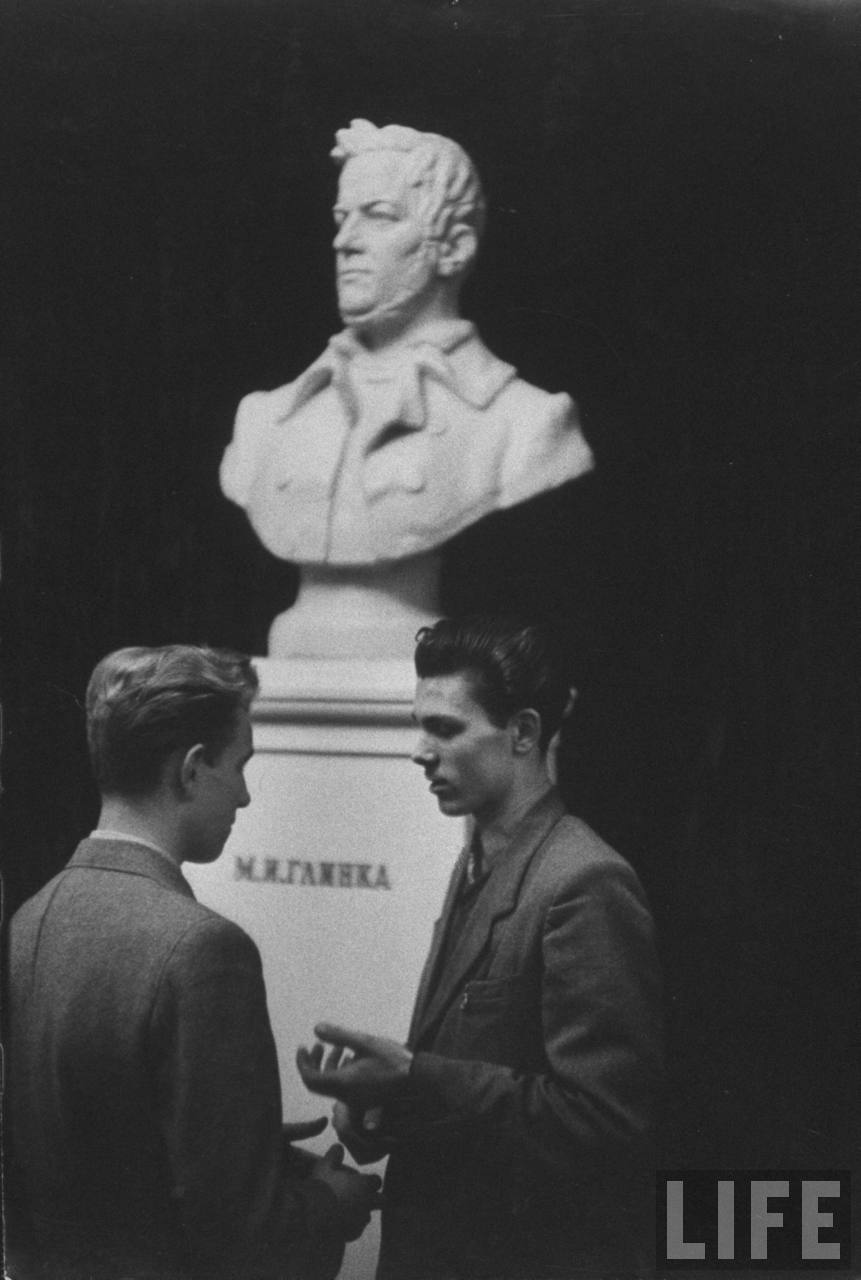
High school student Alexei Kutzkov (R) and a classmate stand beside a bust of composer Mikhail I. Glinka at the Moscow Music Conservatory. ©Time.Howard Sochurek. 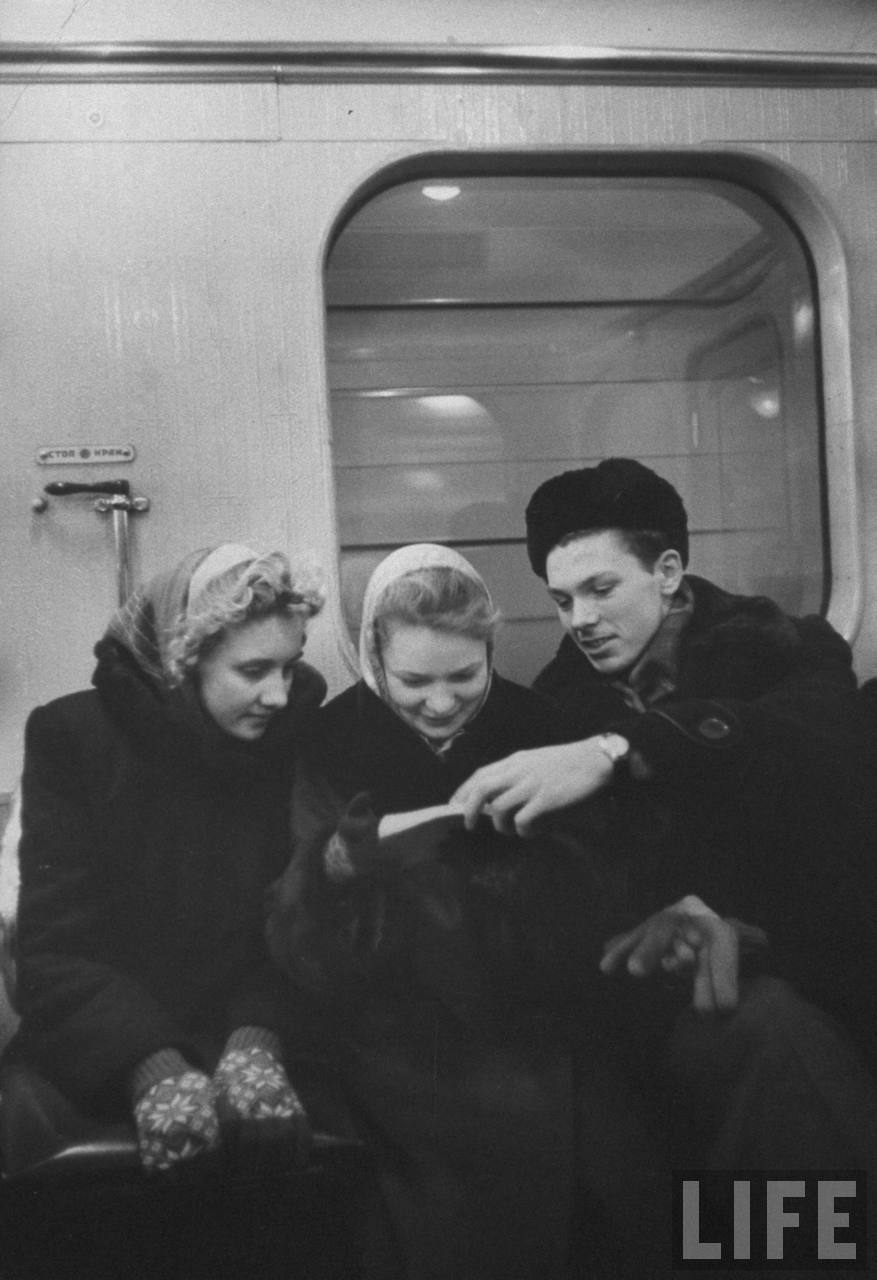
Russian high school student Alexei Kutzkov riding subway with school friends during field trip. ©Time.Howard Sochurek. 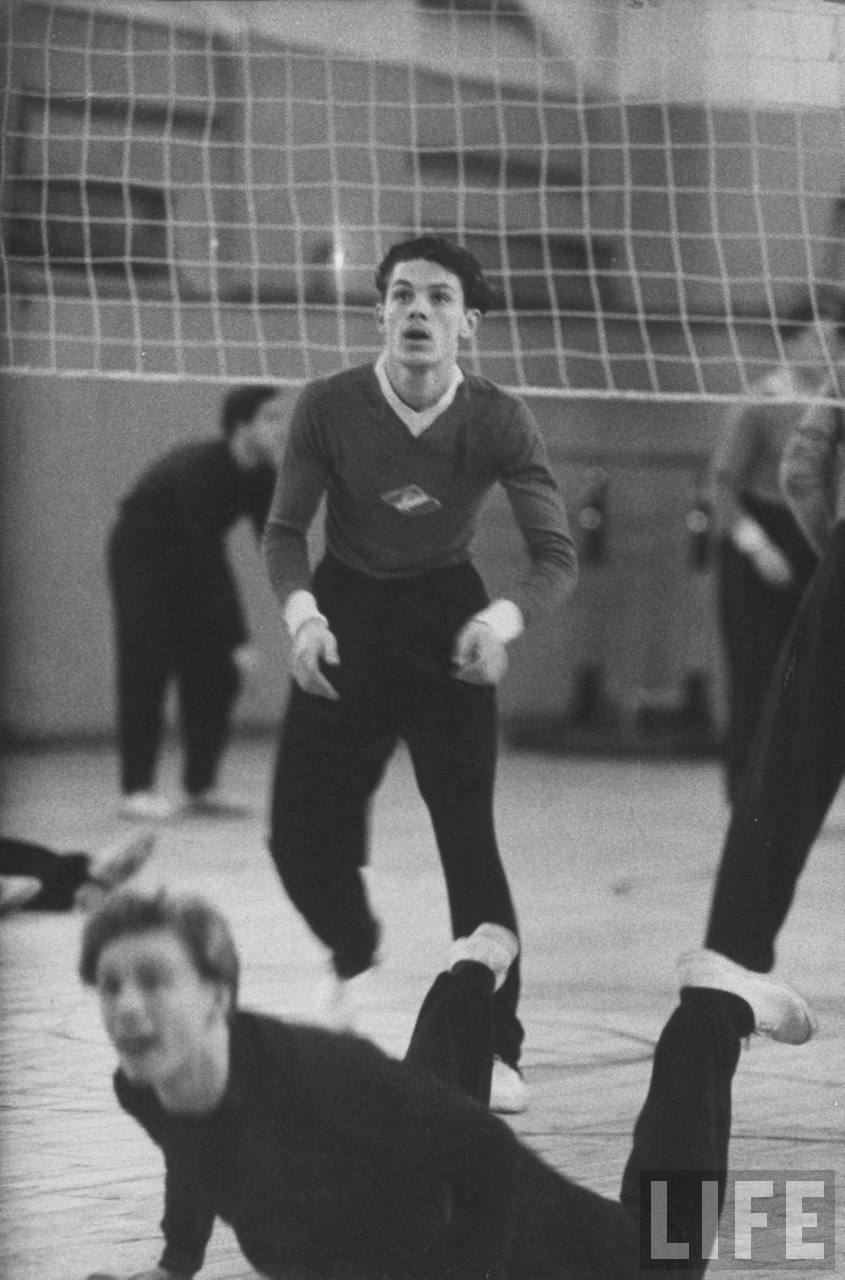
High school student Alexei Kutzkov playing in a volleyball game. ©Time.Howard Sochurek. 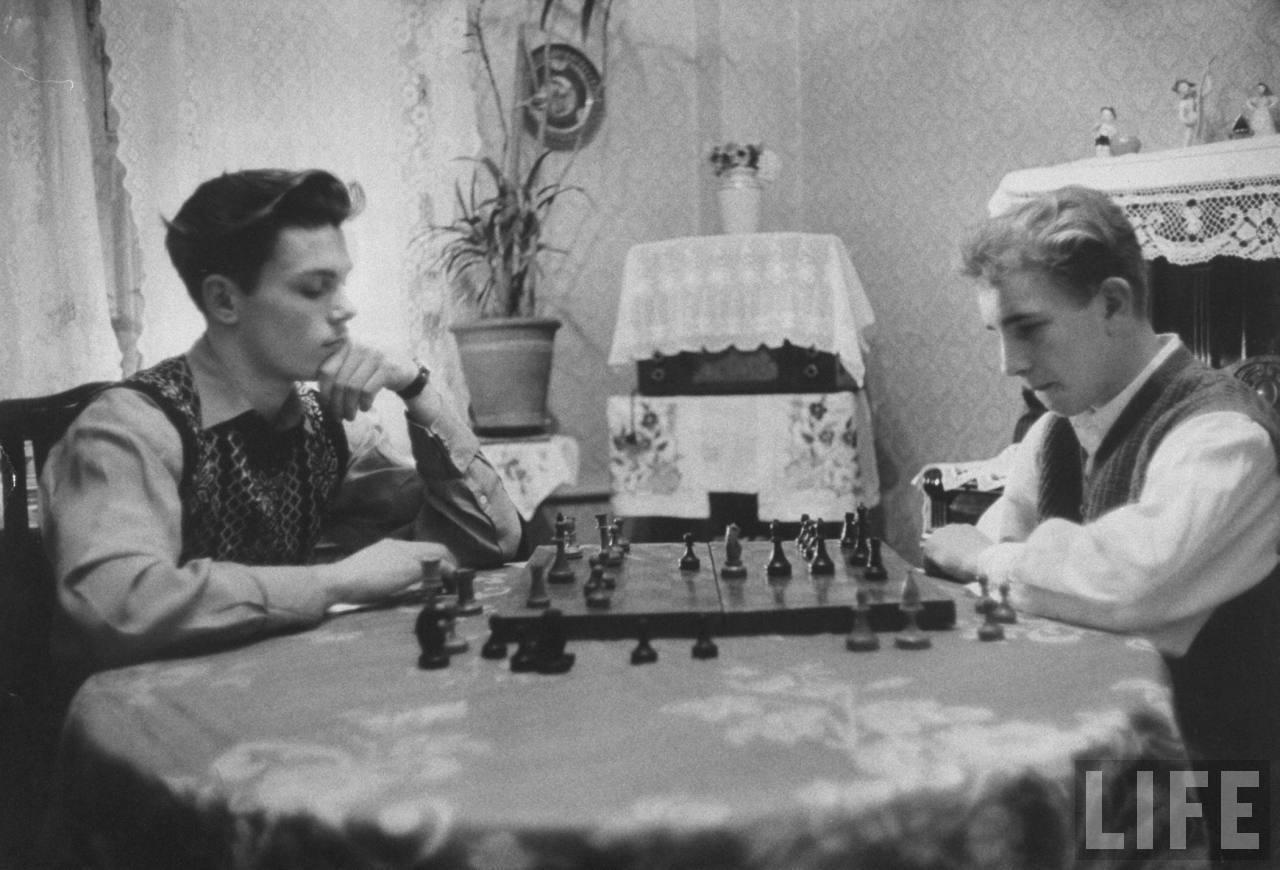
Alexei Kutzkov and Oleg Koryakovsky playing chess. ©Time.Howard Sochurek. 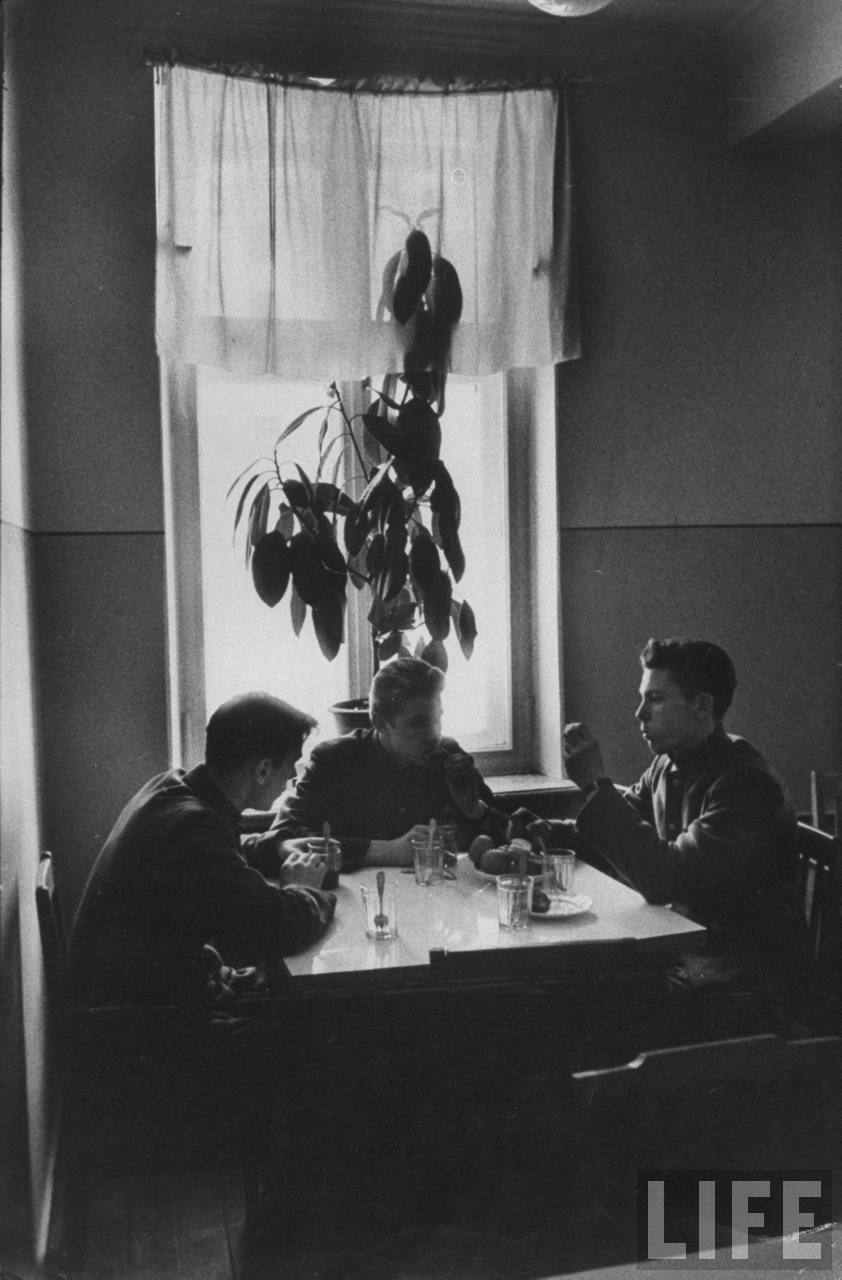
Alexei Kutzkov (R) and friends having lunch. ©Time.Howard Sochurek. 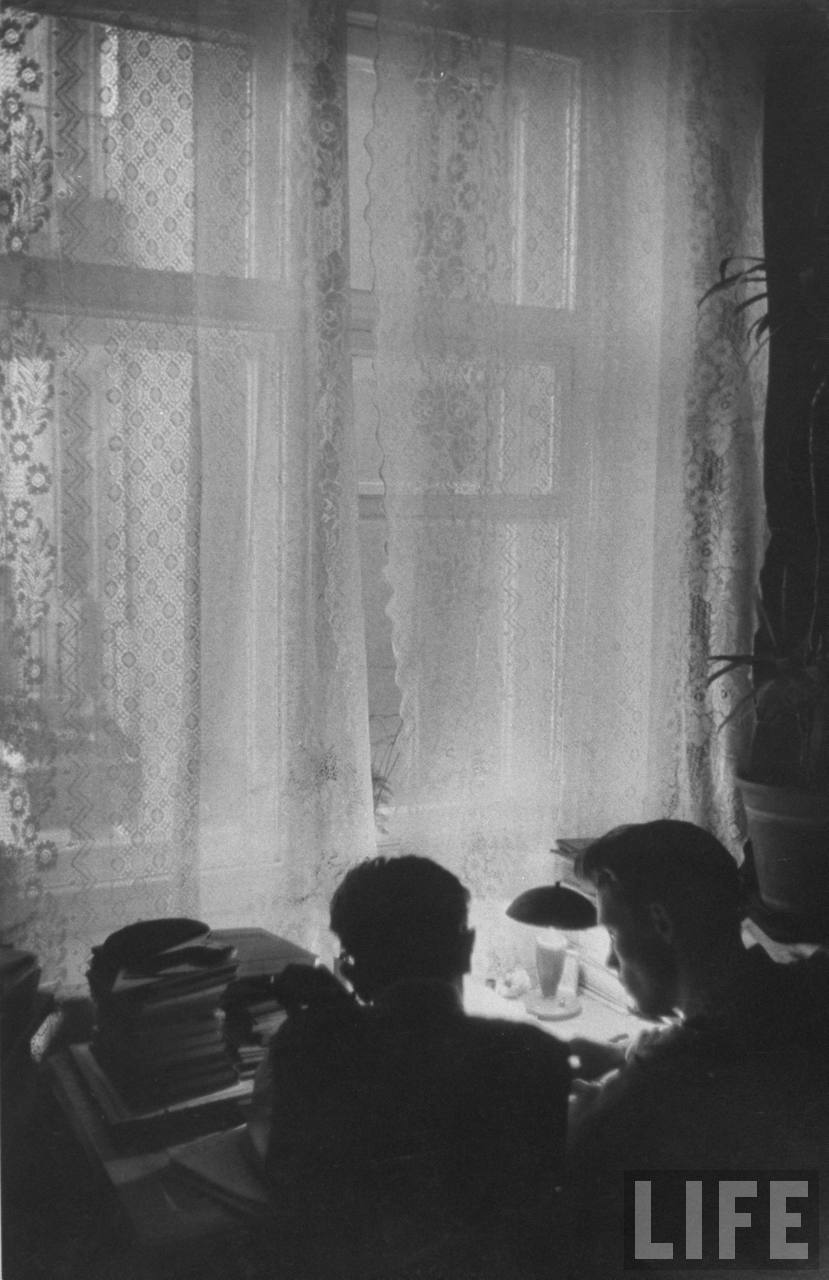
High school student Alexei Kutzkov and a friend studying together. ©Time.Howard Sochurek. Continue to part II.
Continue reading →Kansas Roadtrips: Museums of Hutchinson
Most people come to Hutchinson, KS to visit its world-class museums – Kansas Cosmosphere and the Kansas Underground Salt Museum. Only few visit prairie dogs. Even fewer do all three. We were in the smallest of minorities who did all that and had a dinner at the Dutch Kitchen restaurant.
Note to a future visitor: Visiting the Salt Museum takes about 2 hours, while the Cosmosphere can keep you busy all day. Plan accordingly and attend the latter when you have plenty of time.
Given Hutchinson’s salt-mining roots and multiple working and abandoned mines in the area, it’ no surprise that one of the biggest museums of that kind in the world is located there.
Although numerous old people are seen approaching the building with the sign “Underground Bound”, it’s not an old people recycling facility. Many of them actually make it back to the top.
Continue reading →Foam on the Water
I noticed this fountain this morning with about 8 feet of foam on the top. By the time I was back to take a picture someone, obviously without a sense of humor, turned it off. Still a nice combination snow-white foam and flowers.
Continue reading →
Created with Admarket’s flickrSLiDR.Care And Feeding Of Old Folks
Before you bring old folks to your house make sure their shots are up to date and they are toilet-trained. Old folks like to sit around and watch TV, read newspapers or pretend to solve puzzles while secretly peeking into the back page for the answers. Leave your old folks plenty of room to walk and play. Keep your house temperature around 75F, old folks tend to feel cold. They will let you know they are hungry by shuffling around the house and aimlessly opening and closing the refrigerator. If you want to feed your old folks, there is no food they like better than “Old Folks” Country Sausage Gravy, and it says so right on the box! It’s fatty, nutritious and doesn’t require chewing. Remember to scratch your old folks behind the ear while they are eating, they will enjoy it.

As Seen At Hy-Vee in Olathe After 4 weeks of feeding your old folks with the Country Sausage Gravy you will notice a youthful spring in their movements and a healthy shine in their hair. They may try to use their gravy-fed youthfulness to escape. Keep your doors locked at all times. If you properly care for and feed your old folks they will provide many years of fun and companionship.
Continue reading →Behind The Iron Curtain:Hitching a Ride
Recent post by Scott Adams described his vision for the future of public transportation in the new economy.
Suppose the government enacted laws that made it legal for anyone to be a taxi driver in his own car without a special taxi license. And suppose the income was non-taxable. The result would be cheap taxis and high availability. Every time you wanted to run an errand, and had an extra minute, you could choose to pick up a rider and cut your own driving expense in half. Technology will make it easy to match amateur taxi drivers with riders. And the market would keep prices low.
This is very similar to the system that existed for years (and still alive an well) in the USSR and countries that followed it. In addition to pretty well developed system of public transportation and state-owned taxis, a person could just stand on the street, raise a hand and flag down a private car. Both sides benefited equally: a passenger received a semic0mfortable ride for a price comparable to a cab (general price/distance ratio was common knowledge) and a driver made some extra money without making any extra effort. Some people liked it so much that they made it into a part-time job. Others just picked up passengers on the way home or wherever.
Imagine yourself standing somewhere on the Lenin Street (each city had one of these), you raise your hand and soon one of these beauties stops to pick you up:
Created with Admarket’s flickrSLiDR.Soviet Union had its own “Big 3”: GAZ, AutoVAZ, and AZLK; ZAZ in Ukraine produced some of the ugliest and the most unreliable even by the Soviet standards vehicles. Due to the shortage of cars and years-long waiting lists people were happy to get anything with wheels. Sometimes, when at the end of the month autoworkers were rushing to fulfil quotas so they can get their bonus, a lucky buyer would find a bucket of uninstalled parts inside his new vehicle. Despite these cars being 20-30 behind the rest of the automotive world when they came off assembly line, many of them are still on the road closing in on 40 years. Soviet people invented ingenious ways of keeping them going and they turned out relatively easy to fix and maintain.
My current situation does not easily lend itself to carpooling: I don’t always go straight to work and don’t always drive straight home. The other problem is potential emergency situations that happen rarely but still have to be planned for. In this city I don’t have a reasonable way of getting home from work without my personal vehicle, so I would welcome an opportunity to get a ride from someone who is already headed in the same direction. The only issue is that when I was growing up© people getting into a stranger’s car were not afraid to be later found in the woods in a block of concrete; drivers were not generally scared of being robbed, killed or raped. Once I hitchhiked almost 200 miles from where I was stationed in the army to my hometown, changing 5 or 6 cars in the process and never felt any danger; I was wearing my uniform and no one ever asked me for any money. (if some window pops up, just click “return to map”) I don’t know if I would have the same trust now, but if sharing a ride was commonly accepted practice I would probably give it a try.
If you are ever so lucky to get a ride in an old Soviet Car make sure to try this, it will make you instantly popular:
Continue reading →